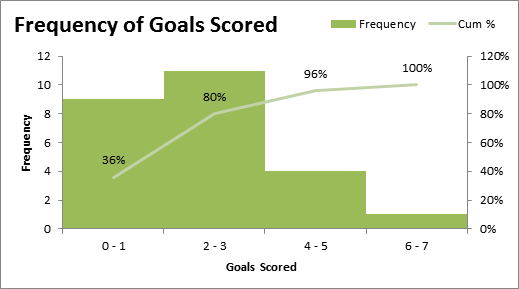

- Frequency table for a range of table microsoft excel 2011 download#
- Frequency table for a range of table microsoft excel 2011 crack#
Frequency table for a range of table microsoft excel 2011 download#
Note: You can download a demo spreadsheet that illustrates these examples. These summarizing tips will help you put Excel‘s summarizing features and functions to work for you. Number crunching is Excel’s forte, so when you’re ready to move beyond the basic summarizing aggregates, such as SUM() and AVERAGE(), you’ll find a lot of power and flexibility at your disposal. 2018 while this program might look a little different, the steps shown in this tutorial are the same. 2012 and the video tutorial for this article published Dec.
Frequency table for a range of table microsoft excel 2011 crack#
Letter frequency distributions are also used in frequency analysis to crack ciphers, and are used to compare the relative frequencies of letters in different languages and other languages are often used like Greek, Latin, etc.Editor’s Note: This article was originally published in Sept. If the distribution is more outlier-prone than the normal distribution it is said to be leptokurtic if less outlier-prone it is said to be platykurtic. The kurtosis of a frequency distribution is a measure of the proportion of extreme values (outliers), which appear at either end of the histogram. This assessment involves measures of central tendency or averages, such as the mean and median, and measures of variability or statistical dispersion, such as the standard deviation or variance.Ī frequency distribution is said to be skewed when its mean and median are significantly different, or more generally when it is asymmetric. Statistical hypothesis testing is founded on the assessment of differences and similarities between frequency distributions. There are simple algorithms to calculate median, mean, standard deviation etc. Managing and operating on frequency tabulated data is much simpler than operation on raw data. The total row and total column report the marginal frequencies or marginal distribution, while the body of the table reports the joint frequencies. Two-way contingency table with marginal frequencies as required.īivariate joint frequency distributions are often presented as (two-way) contingency tables:


Generally the class interval or class width is the same for all classes. The ideal number of classes may be determined or estimated by formula: number of classes = C = 1 + 3.3 log n (assuming the class intervals are the same for all classes). Too many classes or too few classes might not reveal the basic shape of the data set, also it will be difficult to interpret such frequency distribution. Frequency distributions are used for both qualitative and quantitative data. Some of the graphs that can be used with frequency distributions are histograms, line charts, bar charts and pie charts. It is a way of showing unorganized data notably to show results of an election, income of people for a certain region, sales of a product within a certain period, student loan amounts of graduates, etc. A frequency distribution shows us a summarized grouping of data divided into mutually exclusive classes and the number of occurrences in a class.


 0 kommentar(er)
0 kommentar(er)
